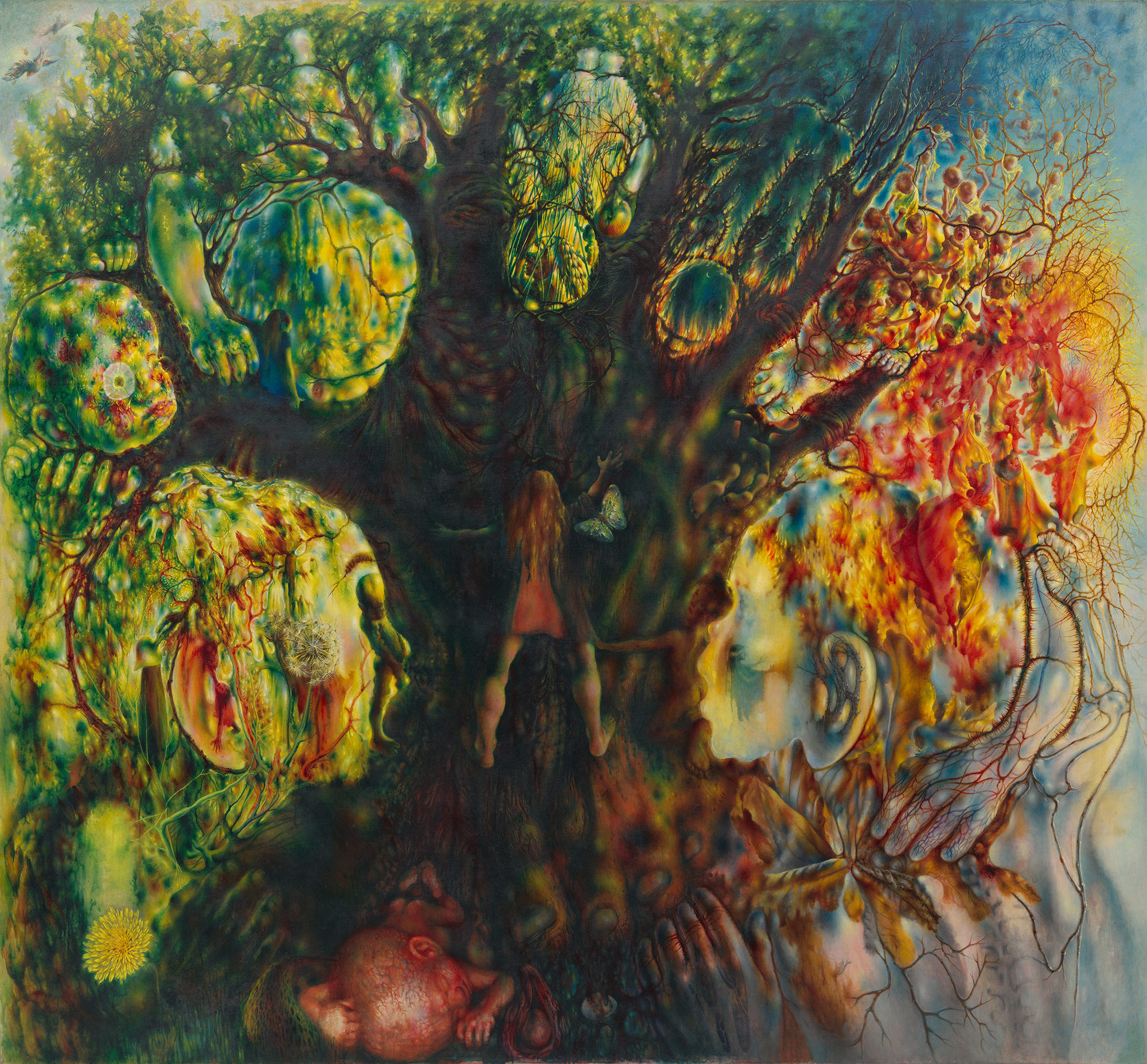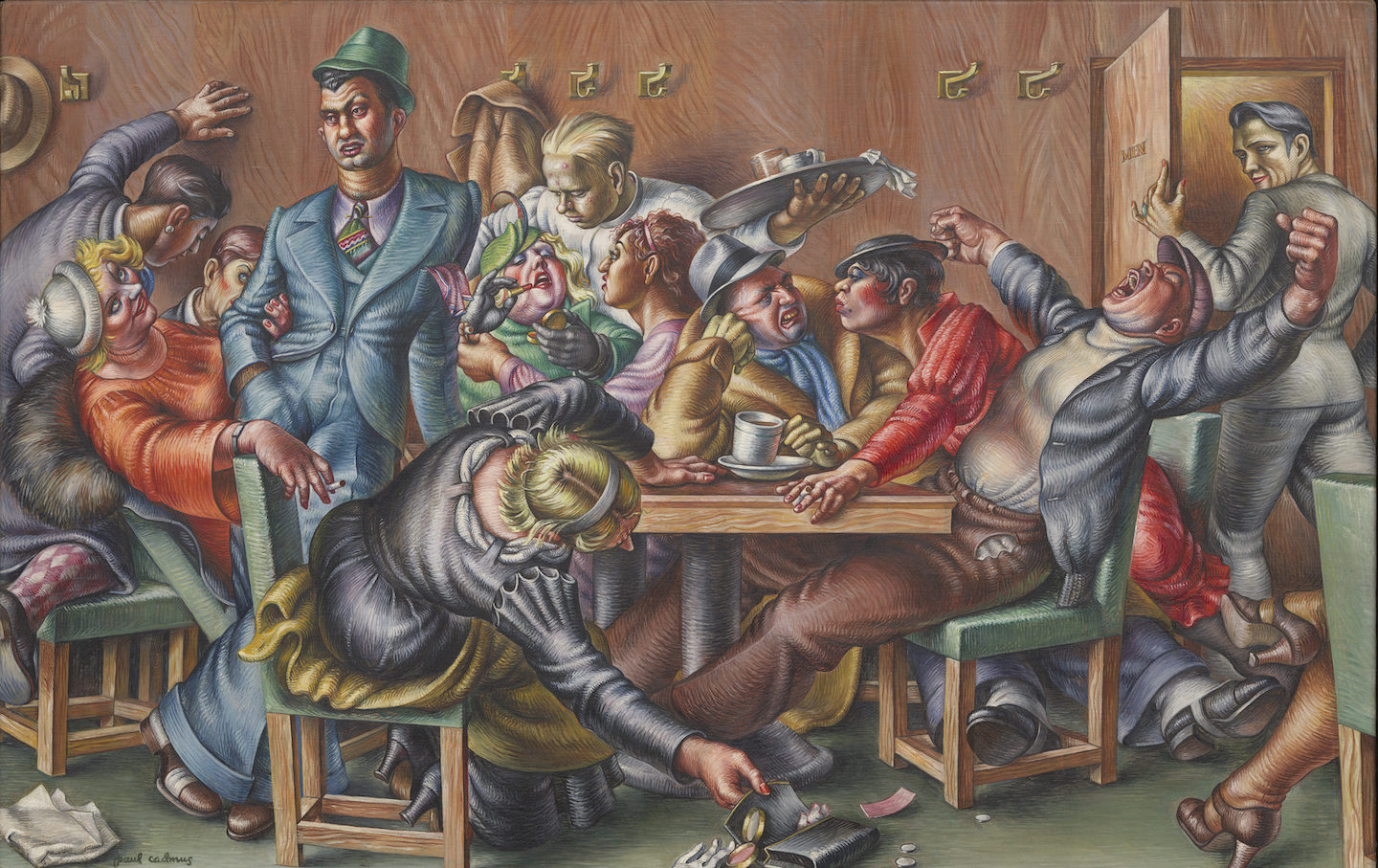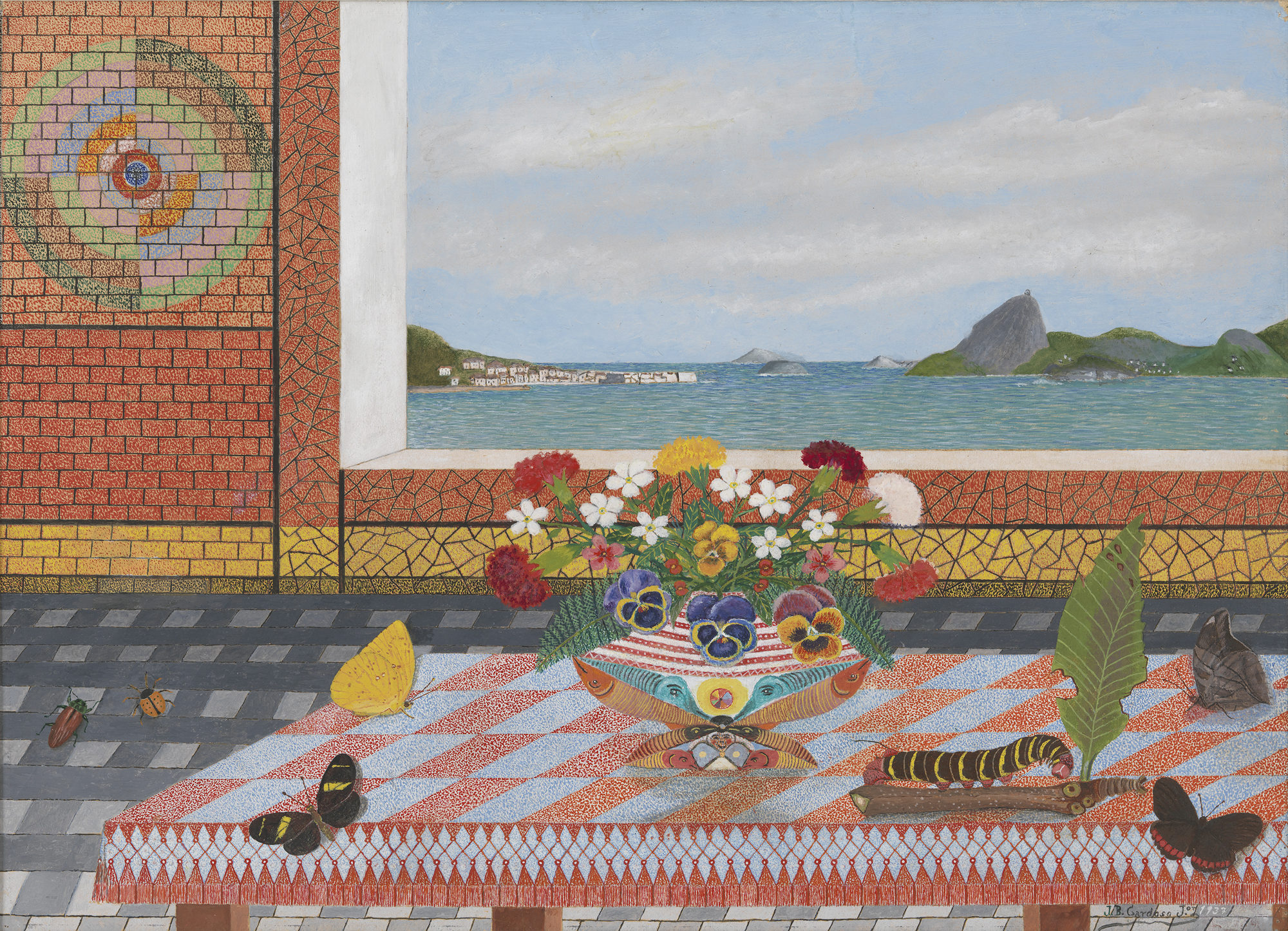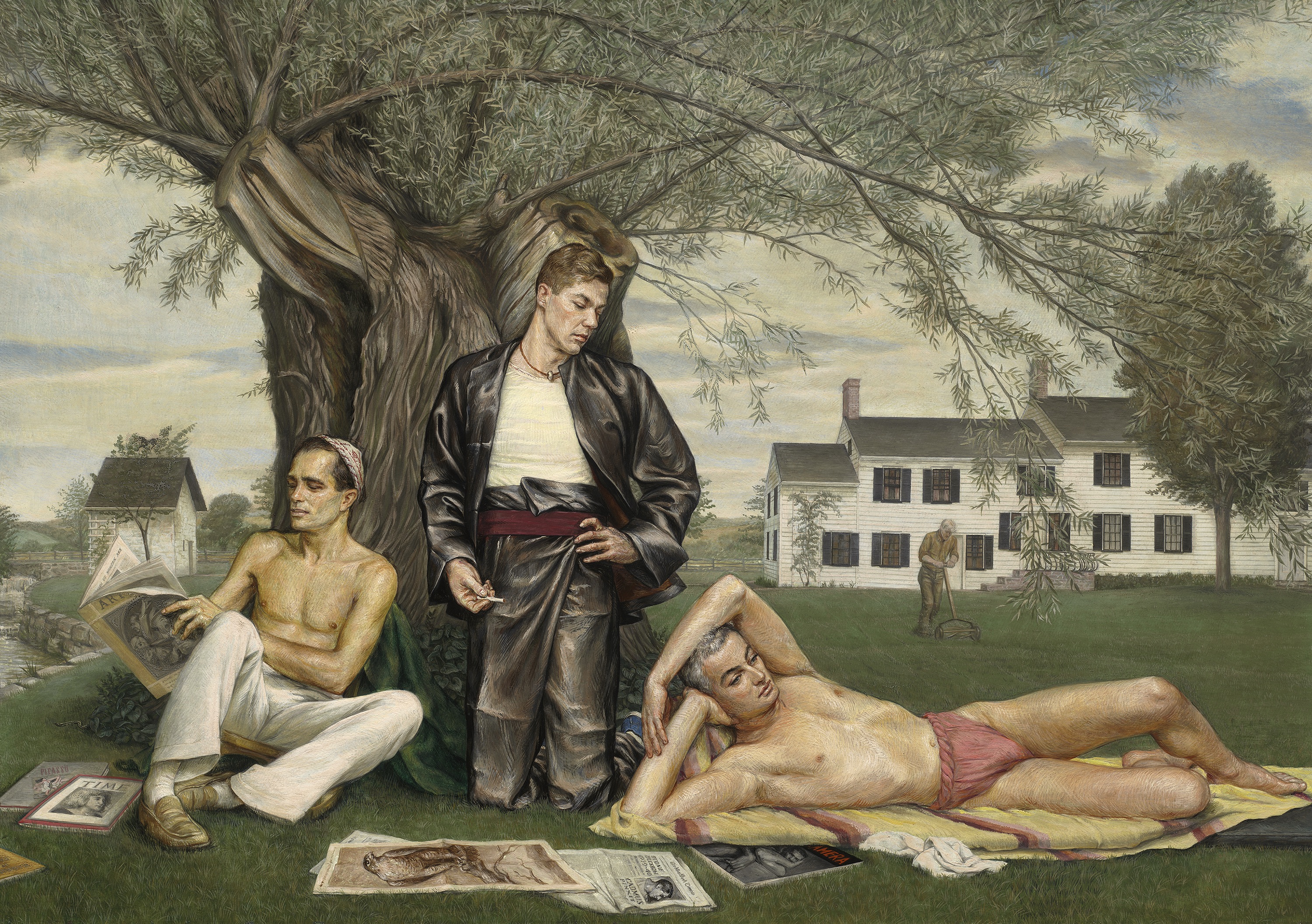Visiting London in 1925, the 18-year-old Lincoln Kirstein, the art-loving son of one of the partners in the Filene’s Department Store in Boston, was taken to visit an exhibition of Cézanne watercolors. Kirstein, by his own account, was “smothered by devotion to Burne-Jones, Beardsley, and academic figurative rendering,” and his cicerone on this occasion was no less eminent a Bloomsburyite than John Maynard Keynes. Noting the young man’s “wan response” to works that seemed, by contrast with the likes of Burne-Jones, “clumsy” and “unfinished,” Keynes (who was buying several of the pieces) imparted a lesson on art’s multiple frames of value. As Kirstein relates in his memoir Mosaic:
After explaining the method of visual abstraction by generalizing shapes, [Keynes] remarked that there were alternate elements for analysis. Had I noticed that most framed and matted sheets were signed and dated? I had not. This, he said, was as salient a factor as color; it placed art in time, in the sequence of practice. On what other papers had I failed to notice signature and date? He pulled from his wallet a five-pound note, inscribed with the customary dates and names. He explained that art also offered its treasury of worked paper as a negotiable-security. While Aubrey Beardsley’s drawings might now be priced less than Cézanne’s, this had little to do with any absolute value. Different modes of describing form, flat or full, were only suggestions toward plasticity, the variable spectra of taste.
Of course, Kirstein was not yet the exquisite writer, impresario, and activist he would soon become. He is best remembered today as the man who, in his four-decade role as general director of the New York City Ballet, brought George Balanchine to America and helped make him one of the central figures of its midcentury culture. But he was also, in his many books and essays, a talented theorist of dance, a connoisseur of photography (as well as author of early monographs on Walker Evans and Henri Cartier-Bresson), and a contrarian critic of painting.
Even as a teenager, Kirstein was ready to shake things up to whatever extent he could. As a Harvard undergraduate whose father could finance his projects, he launched a couple of legendary cultural initiatives. With his fellow student Varian Fry, who would later help set up the Emergency Rescue Committee and assist thousands of refugees to escape Vichy France, he founded the magazine Hound & Horn, one of the premier vehicles for literary modernism in the late 1920s and early ’30s. Its pages featured T.S. Eliot, James Joyce, and Gertrude Stein, to name just a few. Kirstein also helped start the Harvard Society for Contemporary Art, which introduced modernist painting and sculpture to Boston—Matisse, Picasso, Léger, and so on. It was probably a foregone conclusion that, even before he left Harvard in 1931, he would join an advisory committee at the new Museum of Modern Art in New York and remain close to the institution through the 1940s.
The young Kirstein was taken aback by Keynes’s “cool, dispassionate, ironical” lesson, but in retrospect felt that it had “launched a radical reformation in my naïve judgment.” And yet not so radical as all that: Kirstein could never really learn to love Cézanne or any of the artists who followed the clues he’d left, let alone full-blown abstraction, which all his life Kirstein dismissed as merely “an admission of failed skill.” In the long run, most of the art promulgated by the Harvard Society for Contemporary Art would not be of the sort that in his maturity Kirstein would continue to stand by; he’d never really lose his taste for academic figurative rendering. His vision of what modern painting should be—encompassing the rowdy realism of Paul Cadmus and the fantastical mannerism of Pavel Tchelitchew—was directly opposed to what are now remembered as the accepted tenets of modernism. What counted for Kirstein above all was a robust rendering of the surfaces and volumes of things in three-dimensional space, not an adherence to the flat truth of the picture plane. And he admired what he once called “a frank, cool art” with a popular touch, no matter whether its content came from subjective imagination or the social world around us. Abstract art, in his eyes, was an abdication.
Popular
"swipe left below to view more authors"Swipe →
All the more reason why one might at first be surprised to encounter an exhibition titled “Lincoln Kirstein’s Modern” at the Museum of Modern Art, for so long the temple of abstraction. The exhibition, organized by Jodi Hauptman and Samantha Friedman, is on view through June 15. The surprise is especially piquant for someone like me, who got to know the museum during the period when William Rubin reigned as director of its Department of Painting and Sculpture (1973–88). This was the period when the museum’s program seemed to posit a more or less direct line from Cézanne through the Cubism of Picasso and Braque to the abstraction of Frank Stella and Anthony Caro—to name a few of the artists to whom Rubin devoted landmark exhibitions.
But earlier incarnations of the Modern—as it was known before “MoMA” became its brand name—had room for more various and often inconsistent aesthetics. Consider the 1940s, when the now half-forgotten Russian-born painter Tchelitchew was accorded a retrospective. A painting from that show—Hide-and-Seek (1940–42)—was immediately purchased for the museum’s collection and became known, for decades, as one of its most crowd-pleasing attractions. It must have been sometime during Rubin’s tenure that this trippy, candy-colored canvas—in which the game of hide and seek is to be played as much by its viewers, who can endlessly entertain themselves exploring its multilayered and sometimes veiled imagery, as by the children depicted in it—was banished to storage except for special exhibitions.
This was not the rigorous modernism that Rubin was preaching as a leading member of a generation that, as art historian Robert Rosenblum recalled, “emerged under the illuminating lights and disturbing shadows of Clement Greenberg’s unswerving faith in his own system of law and order.” It was Greenberg who had decreed, reviewing Tchelitchew’s 1942 retrospective, that “his latest oils with their shrill saccharine color and gelatinous symbolism set a new high in vulgarity.” More broadly, Greenberg noted a couple of years later that the new wave of “neo-romanticism” of which Tchelitchew was a part had turned the romanticism of the 19th century upside down: “For it does not revolt against authority and constraints, but tries to establish a new version of security and order.” Nostalgic, conservative, and mannered, Tchelitchew’s work was for “those who want to be let off easy by modern art.” And Greenberg counted Kirstein among that crowd.
Yet Tchelitchew’s art was vital to Kirstein’s idea of the modern, and therefore Hide-and-Seek has a central place in the MoMA show. In retrospect, the intensity of Greenberg’s revulsion seems hyperbolic. The painting is an eye-catching, creepily seductive work that continues to exert its fascination, and part of that fascination comes from its eerily unnatural color. At the same time, remembering that comparisons are essential to the appreciation of art, a stroll through the museum’s permanent collection might convince you that Greenberg had a point, that what his modernist lions (Matisse, Picasso, Miró…) were producing at around the same time—or what the American abstract expressionists were just about to produce—was inestimably deeper and better than Tchelitchew’s show-stopper.
But maybe it’s a mistake to make those comparisons too hastily. “Lincoln Kirstein’s Modern” illustrates what Keynes called “the variable spectra of taste” by showing Kirstein’s position on painting in a context where it is merely one item in the vast range of his eclectic interests. “The one thing I wanted,” Kirstein admitted to himself early on, “was to affect people and get things done.” After an introductory section focused on his activities at Harvard, the show maps out his involvement in dance, with many of the sketches for scenery and costume designs that he commissioned from artists like Tchelitchew, Paul Cadmus (whose sister Fidelma Kirstein married in 1941; also an artist, she is strangely absent from the show), and Kurt Seligmann, as well as archival film footage of dancers in action, both in rehearsal and performance. Most of this art is of a surrealist or neo-romantic stripe, or what Kirstein dubbed “magic realism”; but as a fanciful flourish added to the more resolutely modern aesthetic that Balanchine brought to the ballet, it makes sense—ballet being, after all, a highly rarefied form of theater that feeds on its somewhat artificial atmosphere of magic.
Kirstein’s passions also encompassed sculpture. In particular, he championed Elie Nadelman and Gaston Lachaise. Nadelman was a Polish Jew, born in 1882, who became part of the pre–World War I Paris avant-garde (in a 1948 exhibition catalog, Kirstein argued that Nadelman had been a crucial influence on Picasso) and immigrated to New York in 1914; he was a great collector of folk art, which he loved to emulate in his own work. Nadelman’s sculpture, Kirstein observed, “suggested a maximum of rounded, three-dimensional plasticity.” The same is even more true of Lachaise, a Frenchman, also born in 1882 and likewise an immigrant to New York, where he became an assistant to the art-deco sculptor Paul Manship, best known for his Prometheus statue at Rockefeller Center. Lachaise’s sculpture could at times attain an almost grotesque carnality, whereas Nadelman’s style is tempered by his innate classicism and his affection for folk art. In the section devoted to their work, though, the exhibition falls short: I would have given it much more space in order to better show Nadelman’s incisive stylizations and the enormous monumentality of which Lachaise, especially, was capable, affording Kirstein’s view of their importance a real demonstration.
Where Kirstein’s aesthetic did not go against the flow of what turned out to be the dominant trend of modernism was in photography; he brought Walker Evans to MoMA in 1933 and again, more decisively, in 1938 with the exhibition “American Photographs,” and he instigated MoMA’s 1947 show of Henri Cartier-Bresson. Ironically, Kirstein’s praise of the latter’s “radical aesthetic” as a function of “his denial of the academic ‘artistic’ or salon taste of modern art-photography” seems to echo Greenberg’s dismissal of the kind of painting that Kirstein loved as conservative and nostalgic. In photography, at least, despite Kirstein’s appreciation of George Platt Lynes’s surrealism-tinged homoeroticism, his most passionate advocacy was for a blunt and unadorned style, without mannerism and attentive to the social fact “shown surgically, without the intrusion of the poet’s or painter’s comment or necessary distortion.” The section of the exhibition devoted to photography is its most aesthetically satisfying but least surprising part.
From this putatively undistorted record of the visible surface of the social, it might have been a shock to turn to the fantastications of a magic realist like Tchelitchew, but the exhibition at MoMA wisely interposes a section titled with a phrase from one of Kirstein’s journal entries from the 1930s: “A Lyric Aspect of the Country.” Here we see works of social realism by artists like Ben Shahn and Honoré Scharrer; most appealing to me are some 1933 lithographs by Hugo Gellert, illustrating a book called ‘Capital’ in Pictures. As Lynn Garafola points out in her catalog essay, Kirstein was at this time very much a “fellow traveler” of the Communist Party. His approval of the rhetorical exaggerations practiced by social-realist painters protesting conditions under capital in the time of the Great Depression makes one question his own idea that, at least in photography, a truly sober and objective document is possible. When there are truths that one wants to shout at the top of one’s lungs, the distinction between “social realism” and “magic realism” (or even “surrealism”) becomes vague, and Kirstein could appreciate anything he saw as taking up a position.
This mix of fantasy and protest is equally visible in the selection of works that Kirstein collected on behalf of MoMA on a 1942 trip through Brazil, Argentina, Uruguay, Chile, Peru, Ecuador, and Colombia. He was there to help the museum expand its Latin American collection, but also, surreptitiously, to report to the US government’s Office of the Coordinator of Inter-American Affairs—headed, like MoMA’s Inter-American Fund, by Nelson Rockefeller. Whatever the value of the reports that Kirstein sent back in his role as “covert operative,” his finds as an art adviser are spotty—though the eclecticism of his taste for representation is honored by a few choices, from the Uruguayan Pedro Figari’s rough-hewn Creole Dance (circa 1925) to the ultra-delicate realism of a cloud study by a Colombian artist, Gonzalo Ariza, titled Savanna (1942). An imposing 1937 canvas by the Argentinian painter Antonio Berni, New Chicago Athletic Club, shows that the kind of social realism that attracted Kirstein was being pursued by artists in the Southern Hemisphere as well.
What happened to Kirstein’s political passions of the 1930s isn’t quite clear. Perhaps the onset of war put a new perspective on things. But his equal affection for leftist social realism—in North or South America—and an ostensibly more apolitical magic realism should make one question Greenberg’s insistence that the latter had to be not just artistically but also politically reactionary, favoring “sentiment, pleasure, and certainties” over “convictions, activity, politics, adventure.” “Lincoln Kirstein’s Modern” suggests that Greenberg’s dichotomy—though it is not only his, since many critics have used similar terms ever since to brand what they reject on aesthetic grounds as, worse yet, politically indefensible—was too rigid. Kirstein had convictions aplenty, and if anything was too self-assured in what Igor Stravinsky called his “bellicose dedication to the beautiful and a contempt for the sham” (the sham as he saw it, of course). The architect Philip Johnson once observed that Kirstein “was so very, very violent in his feelings,” and that this was “his charm as well as his difficulty.” Ironically, in this, Kirstein had much in common with Greenberg.
It remains difficult to parse the relationship between Kirstein’s love of hardheaded austerity in photography and his seemingly self-contradictory idea of a “magic realism” in painting—though it’s interesting that he saw in both a kind of cool diagnostic gaze; and just as he felt that Evans’s photographs showed things with surgical precision, so he also claimed that in the minutely detailed rendering of magic realists like Jared French, “there is often a tenderness of the surgeon’s capable hand, an icy affection acquired from a complete knowledge of the subject.” Likewise, there is something yet to be understood about the relation between the exquisite aestheticism of a balletomane and the conviction of a leftist close to the orbit of the Communist Party USA, and whose commitment to social justice would last at least until 1965, when Kirstein joined the civil rights marchers at Selma, Alabama. The complexity of anyone’s character outstrips a critic’s attempt to lay down criteria for, say, what’s progressive and what’s reactionary. Greenberg’s accusatory equation between aesthetic and political conservatism appears simplistic in light of a life like Kirstein’s.
Perhaps even more elusive is the relation between anyone’s intimate life and his or her feelings for art or politics. Yet one of the compelling aspects of Kirstein’s existence is undoubtedly his position as one of the key figures in a predominantly queer network of artists and writers who were working, at least for a while, in intense dialogue with one another to forge an aesthetic that somehow seems both very much of its time and against the grain of the time. While this is touched on at MoMA—the catalog includes a valuable essay on this, by Richard Meyer—one gets a more vivid picture of what Meyer calls “Kirstein’s Queer Arithmetic” from a smaller but also very dense exhibition, beautifully curated by Jarrett Earnest, at the David Zwirner Gallery.
Earnest’s show, “The Young and Evil,” is named after a 1933 novel written by the poet Charles Henri Ford and the critic Parker Tyler. That it was a collaborative work is entirely to the point, though it’s a shame the novel wasn’t the work of three authors rather than two, for—as Meyer emphasizes—these were circles in which triangular relationships seemed to be most common. A Cadmus painting at Zwirner, Stone Blossom: A Conversation Piece (1939–40), documents the three-way relationship between George Platt Lynes, the writer Glenway Wescott, and Monroe Wheeler, a longtime MoMA staff member who eventually became the museum’s director of publications and first director of exhibitions. Wescott, in the center, clad in a strange black outfit—is it leather? or even rubber?—seems torn in his affections between the nearly naked Lynes and Wheeler. Cadmus himself, at times, lived with his lover, fellow painter Jared French, and French’s wife, Margaret, and together the three of them made staged photographs (on view both at MoMA and at Zwirner) under the name PaJaMa, a portmanteau of the first syllables of their first names. Later, a fourth member would enter this ménage, the painter George Tooker. Kirstein’s marriage to Fidelma Cadmus did not interfere with his extensive erotic involvements with men, though his infatuation with her brother went unrequited. Meyer remarks in his catalog essay that “Kirstein’s threesomes were [not] easy for the participants to negotiate,” and this must have been true for the triangular relationships that his friends indulged—as the memoirs and journals that some of them have left confirm. But their persistence suggests the fluidity and heterogeneity of the desire and intimacy that permeated the private worlds of these artists and writers.
The great value of “The Young and Evil” is precisely that it invites the viewer into this world apart, through the inclusion of many drawings as well as personal photographs that were never intended to be exhibited publicly (even though they were the work of people who for the most part had extensive public careers). There may be more representations of the penis here than I’ve seen in any one room, and it’s not surprising to learn that many of the pieces are loans from the Kinsey Institute at Indiana University—“These artists were enthusiastic supporters of Alfred Kinsey’s research” into sexual behavior, as Earnest reports—but the affect is consistently tender or beguiled rather than clinical.
More than painting, sculpture, drawing, or photography, intimacy itself seems to be the operative medium here, and for that reason—in contrast to the more public side of Kirstein and his circle that we come to know at MoMA—Earnest’s suggestion that these queer modernists (who might also have been antimodernists) were “putting ‘reactionary’ form in the service of ‘radical’ content” seems slightly off-key. They do not appear to have been interested, at least when they could be at home in the worlds they shared among themselves, in being either reactionary or radical. It was more that they wanted to know themselves and show themselves without fear of judgment—no matter that what might emerge could be hard, as Meyer says, to negotiate. Earnest is right that this work seems particularly timely today, but it’s not only because of the renewed currency of figurative painting, as he suggests; abstract painters and conceptual artists also seem intent these days on locating the potential for intimacy within their art. That’s something they won’t achieve by taking Cadmus or Tchelitchew as stylistic models—any more than they can get it by imitating Jackson Pollock or Willem de Kooning. Can they create it with whatever techniques they’ve been given out of the tensions and affections within an elective community or the frankness of their own feelings? Some are willing to find out.






